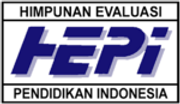Student Worksheet Based on Scientific Approach to Improve Learning Outcomes and Creative Thinking Ability of Elementary Student
Abstract
Keywords
Full Text:
PDFReferences
Arsyad, A. (2007). Learning Media. Jakarta: Raja Grafindo.
Budiyanto, M.A.K., & Waluyo, L.A.M. (2016). Implementation of Scientific Approach in Learning in Basic Education in Malang. Proceeding Biology Education Conference, 13 (1), 46–51.
Daryanto. (2014). Approach to Scientific Learning Curriculum 2013 (Print I). Yogyakarta: Gava media.
Davies, D., Jindal-snape, D., Collier, C., Digby, R., Hay, P., & Howe, A. (2013). Creative learning environments in education—A systematic literature review: Thinking Skills and Creativity, 8, 80–91.
Fakhriyah, F., Masfuah, S., Roysa, M., Rusilowati, A., & Rahayu, E. S. (2017). Student’s Science Literacy in The. Jurnal Pendidikan IPA Indonesia, 6(1), 81–87.
Hamdani. (2011). Teaching and Learning Strategies. Bandung: Loyal Library.
Hardianti, R. D., Taufiq, M., & Pamelasari, S. D. (2017). The Development of Alternative Assessment Instrument in Web-based Scientific Communication Skill in Science Education Seminar Course: Jurnal Pendidikan IPA Indonesia, 6(1), 123–129.
Machin, A. (2014). Implementation of Scientific Approach, Character Planting and Conservation in Learning Growth Materials: Indonesian Science Education Journal, 3 (1), 28–35.
Marjan, J., & et al. (2014). The Effect of Scientific Approach Learning on Biological Learning Outcomes and Science Process Skills of MA Students. You are allimat NW Pancor Selong, East Lombok Regency, West Nusa Tenggara: Journal of Science Education, 4 (1).
Rudyanto, HE (2014). Discovery Learning Model with a Scientific Approach with Character Contents to Improve Creative Thinking Ability: Premier Educandum, 4 (1), 41–48.
Sani, RA (2017). Scientific Learning for Implementation of 2013 Curriculum. (YS Hayati, Ed.4th. Jakarta: Bumi Aksara.
Soemartono, T. (2014). Reconstruction of Education Policy in Jembrana Bali, Best Practices of Creative and Innovative Leadership Using Soft Systems Methodology based Action Research: In Procedia - Social and Behavioral Sciences ,115.
Sapriya. (2014). Social Studies Education. Bandung: Teenager Rosdakarya.
Saubas, U. (2015). Implementation of the 2013 Curriculum through the Application of a Scientific Approach in Text-Based Indonesian Language Learning in Junior High Schools (SMP): EDUCATION - Journal of Education, 13 (1), 208–215.
Sufairoh. (2016). Scientific Approach & K-13 Learning Model: Professional Education Journal, 5 (3), 116–125.
Sukiminiandari, YP, & et al. (2015). Development of Physics Learning Modules: Proceedings of the National Seminar on Physics, IV, 161–164.
Sumarmo, U. et al. (2012). Ability and Disposition of Logical, Critical and Creative Mathematical Thinking (Experiments on High School Students Using Problem-Based Learning and Think-Talk-Write Strategies): Mathematics and Natural Sciences Teaching Journal, 17 (1), 17. 269–282). Elsevier B.V
Walid, M. (2010). Humans and Critical thinking: Falasifa Journal, 1 (2), 93–103.
Wibowo, DH (2015). Application of Student Grouping Based on Achievement at the Primary School Level: Undip Psychology Journal, 14 (2), 148–159.
Wisudawati, AW, & Sulistiyowati, E. (2017). Science Learning Methodology 3rd. Jakarta: Bumi Aksara.
DOI: https://doi.org/10.18326/mdr.v11i1.87-100
Refbacks
- There are currently no refbacks.
Copyright (c) 2019 Akhmad Nurkholis

This work is licensed under a Creative Commons Attribution 4.0 International License.

This work is licensed under a Creative Commons Attribution 4.0 International License.
Program Studi Pendidikan Guru Madrasah Ibtidaiyah (PGMI)
Universitas Islam Negeri (UIN) Salatiga, Indonesia
Jl. Lingkar Salatiga Km. 2 Pulutan, Sidorejo, Kota Salatiga, Jawa Tengah 50716,
Telp. (0298) 323706 – Fax. (0298) 323433
Technical Support: jurnalmudarrisa@iainsalatiga.ac.id
P-ISSN: 2085-2061
E-ISSN: 2541-3457



